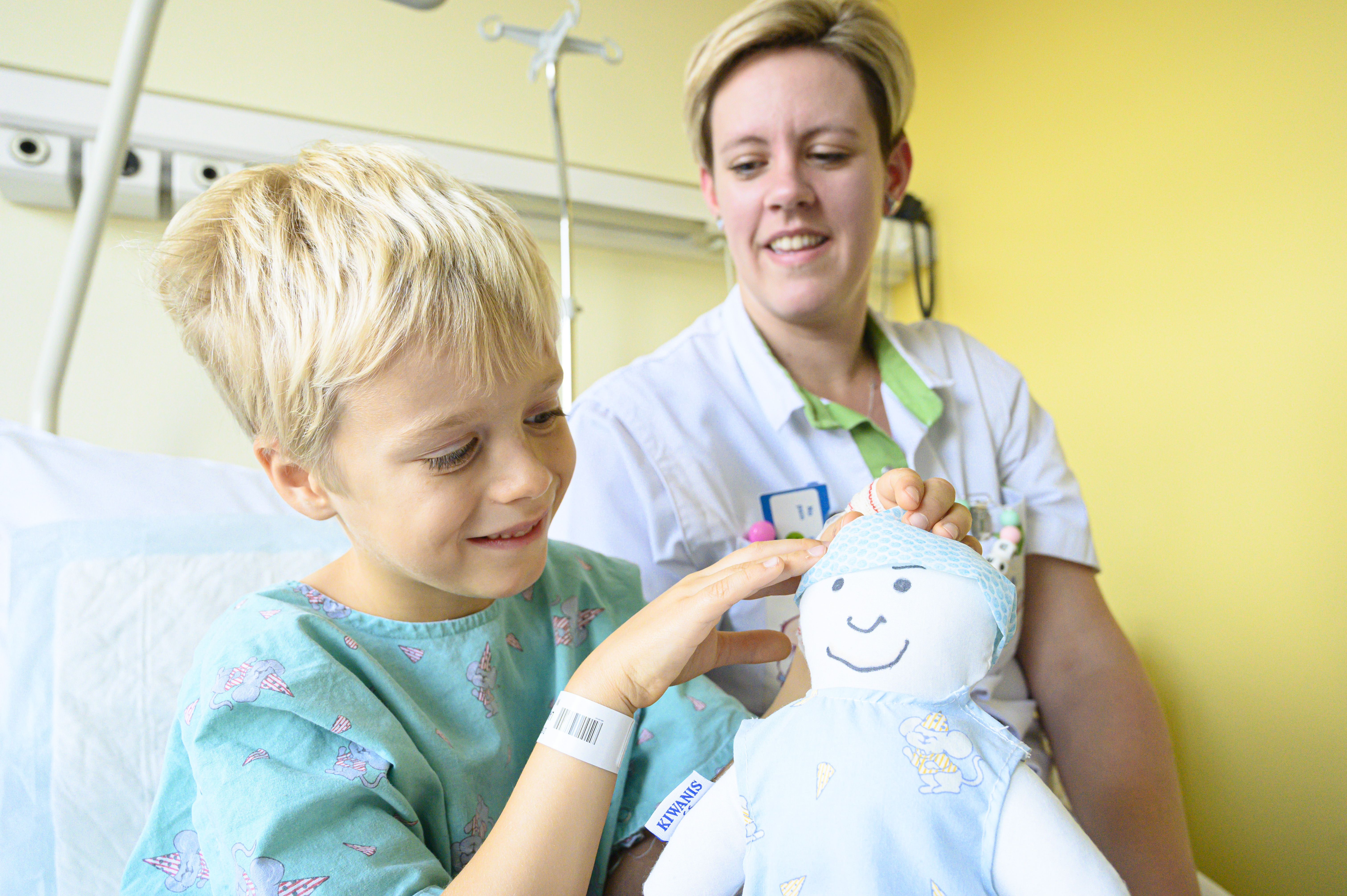Airvo 2 oxygen therapy

Please note
The info on this page only applies to patients and treatments at St Vincent General Hospital in Deinze.
Your child may require respiratory support using a device (the Airvo 2). Lungs that are healthy take in oxygen when breathing in and release carbon dioxide when breathing out. In diseased lungs, this balance is disturbed. This creates a shortage of oxygen and/or an excess of carbon dioxide in the body. This is called respiratory insufficiency.
Read below to find out what high-flow oxygen through a nasal cannula with the Airvo 2 entails and what it means for the child and its loved ones.
Supported breathing with Airvo 2
Supported breathing with Airvo 2This respiratory insufficiency causes the patient to feel short of breath and blood oxygen levels are lower than normal. Oxygen is essential for the body to function properly. With the Airvo 2, we support breathing which will bring oxygen levels back to normal and improve the feeling of tightness.
Nasal cannula are used for this oxygen therapy. The nasal cannula are secured around the patient's head with elastic straps and connected to the Airvo 2 by a breathing tube. In children, the nasal cannula will be attached with a soft adhesive on the cheeks so that the position of the nasal cannula in the nose is always optimised for a good flow.
Heated, humidified and oxygenated air will be blown into the nose through the nasal cannula. The speed at which air flows in and out is called 'flow'. The Airvo 2 is a method in which oxygen can be administered using a large flow of air (high flow).
The air is heated to prevent drying out of the nasal and respiratory mucous membranes. This feels more comfortable when breathing. The patient will feel less short of breath and notices that breathing becomes easier. Because the oxygen is blown through the hose and nasal cannula with a certain force, the Airvo 2 makes more noise than regular oxygen therapy with a mask or regular cannula. This is normal and can do no harm.
In children, the force of the oxygen flow, which is continuous, creates a very slight back pressure at the end of the exhalation. This back pressure ensures that the lungs do not collapse and unfold more easily on the next inhalation.
The device may go into alarm. The nurse hears this and will definitely come and see.
If the Airvo 2 does not produce improvement, the physician may decide to switch to another treatment.
Advantages
Advantages- This therapy can be used in adults, children, infants and newborns.
- Adult patients are asked to breathe in and out through the nose as much as possible with the mouth closed. This is how most oxygen enters the lungs. The patient can be addressed and can talk normally but this can be tiring. In this case, the nurse will indicate that it is better to limit talking.
- In principle, the patient can eat and drink during this treatment. This depends on the physician's policy and will be determined by, among other things, the severity of the shortness of breath, so eating and drinking will not be possible in this sense.
- During care, there is no impediment to performing a thorough oral cleaning.
- The Airvo 2 can be a method to avoid the need for breathing to be completely taken over by a device.
Checks
ChecksDuring treatment with the Airvo 2, the child will be observed intensively with continuous monitoring of blood oxygen levels via oxygen saturation measurement. Follow-up of carbon dioxide (CO2) levels is done with a blood test. Depending on these results, the treatment can be adjusted.
Treatment duration
Treatment durationThe duration of treatment is highly dependent on the disease process and varies from patient to patient. It may take up to several days. When very little support is needed anymore, the therapy will be stopped and oxygen will be administered through regular nasal cannula.
Questions?
Questions?Do you have any questions after reading this information? You can always contact your attending physician through the secretariat or a ward nurse: +32 (0)9 387 72 40.
Deinze - Paediatrics secretariat
Tel. +32 9 387 72 48
E-mail: secretariaat.pediatrie.deinze@mijnziekenhuis.be
Are you worried or do have questions about your child's admission? You can contact the nurse in the paediatrics secretariat during the day . Please ask the paediatrics secretariat your non-urgent questions by email or by phone.
| Monday | Tuesday | Wednesday | Thursday | Friday |
| 8am to 6pm | 8am to 6pm | 8am to 6pm | 8am to 6pm | 8am to 6pm |
If the secretariat is unable to help you, the paediatrics nurse at St Vincent General Hospital in Deinze can also advise you.
Download the leaflet on Airvo 2 here.


